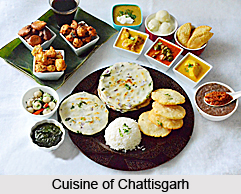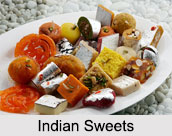 Botanical name:Eugenia caryophyllus (Spregal) Bullock et Harrison
Botanical name:Eugenia caryophyllus (Spregal) Bullock et Harrison
Syan:Syzygium aromaticum (Merrill et Perry)
Family name: Myrtaceae
Indian names are as follows:
Hindi:Laung
Bengali:Labanga
Gujarati:Lavang
Kannada:Lavanga
Malayalam:Grambu
Marathi:Luvang
Oriya:Labanga
Punjabi:Laung
Sanskrit:Lavanga
Tamil:Kirambu, Lavangam
Telugu:Lavangalu.
The clove of commerce is the air-dried unopened flower bud obtained from a handsome, medium sized, evergreen, straight trunked tree that grows in Kerala and Tamil Nadu. Clove is the second most important spice of the world, as judged from the world trade, being next only to black pepper.
The term `clove` is derived from the French word `clov` and the English word `clout`, both meaning `nail` - from the likeness of the flower bud of the clove tree to a broad-headed nail.
Clove is one of the most ancient and valuable spices of the Orient, known as far back as the first century before Christ. The Chinese later knew this spice in 266 B.C. Clove was imported to Europe in 1265 A.D. Its source and place of origin were shrouded in mystery until the Portuguese discovered the Moluoca Island in the 16th century. The French succeeded in 1770 A.D., in introducing the clove tree into Mauritius and Reunion from where it reached Zanzibar. Clove was established in Sri Lanka in 1796 A.D., before the arrival of the British. For sometime, clove was a Portuguese and, later, a Dutch monopoly.
In India, East India Company introduced clove in 1800 A.D. Though clove has been under cultivation for over 150 years, the acreage under the crop has not gone up to any appreciable extent and the production is not sufficient to meet the requirement of the country. India depends almost totally on foreign countries, notably Zanzibar, for supply of clove.
The fully-grown, but unopened buds, are picked green and dried in the sun till they become dark brown, to form the clove of commerce. The buds have a slightly cylindrical base and are surrounded by the plump ball like unopened corolla which is surrounded by the four toothed calyx. If the bud is left unpicked, the flower develops after fertilization into a fleshy, purplish and one-sided oval fruit known as "Mother of Clove". The fruit is about 2.5 cm long and 1.25 cm wide. The seed is oblong, rather soft in texture and grooved on one side. The leaves, unripe fruit and broken clove including the stalk are all aromatic and yield an essential oil.
The air-dried cloves are graded according to their appearance and level of impurity present. About 8,000 to 10,000 cloves weigh one kg or 8 to 10 cloves weigh just one gram. Good quality cloves should be brownish black in color, with full and plump crown, somewhat rough in touch, without wrinkles and should not contain more than 12 % moisture and 2 to 3 % foreign matter (including substandard cloves graded as khoker, headless, mother cloves etc.). Yellowish wrinkled cloves are immature and yield volatile oil poorer in eugenol content - the main constituent. They should have fine aroma and flavor, be free from mould and should readily exude oil when their stem is pressed with fingernail - a layman`s test before the purchase. The defective cloves are of three types as indicated below:
Khoker clovesthe cloves those have undergone fermentation before drying.
Mother clovesthey are actually the clove fruits produced as a result of the fertilization of the opened flower bud.
Headless clovesthey are the cloves without the ball shaped unopened flower bud at the top.
 The composition of cloves varies somewhat according to the agro climatic conditions under which it is grown, processed and stored. A typical analysis reveals the following:
The composition of cloves varies somewhat according to the agro climatic conditions under which it is grown, processed and stored. A typical analysis reveals the following:
Moisture:5.4 %
Protein:6.3 %
Volatile oil:13.2 %
Non-volatile ether extract (fat):15.5 %
Crude fiber:11.1 %
Carbohydrates:57.7 %
Mineral matter:5.0 %
Calcium:0.7 %
Phosphorus:0.11 %
Iron:01 %
Sodium:.25 %
Potassium:.2 %
Vitamin B1:0.11 mg/100g
Vitamin B2:0.04 %
Niacin:1.5 %
Vitamin C:80.9 mg/100g
Vitamin A:175 I.U
Calorific value (food energy):430 calories/100g.
The clove buds, stem and leaves, on steam distillation yield essential oils 15 to 17 %, 4.5 to 5.5 % and 1 to 2 % respectively. Their comparative composition and quality are discussed below briefly:
Clove Bud Oil: The volatile oil derived from the dried buds by steam distillation contains, as its main constituents, free eugenol (70 to 90 %), eugenol acetate and caryophyllene. Although these substances are amount to some 99 % of the oil , they are not responsible for the characteristic fresh and almost fruity note of pure clove bud oil, which is due to traces of other compounds, the most important one being methyl-n-amyl ketone. A special point of distinction for clove bud oil is that it contains a substantial percentage of eugenol acetate whereas clove stem oil and leaf oil contains only traces of it.
Clove Stem Oil: The chemical composition of the oil derived from clove stem has not been investigated as thoroughly as that of the commercially much important clove bud oil, which is usually used in food products and in pharmaceuticals. I general, the chief constituents present in clove bud oil occur also in the clove stem oil, but in somewhat different proportions.
Clove Leaf Oil: Clove leaf oil usually contains a somewhat lower percentage of total eugenol than is present in clove bud oil; eugenol acetate occurs in the leaf oil, as in stem oil, only in very small quantities.
Clove is very aromatic, has a fine flavor and imparts warming qualities. In Indian homes, it is used as a culinary spice as the flavor blends well with the sweets and savory dishes. Clove, both whole and ground, are used in baked goods, confectionaries, chocolate, pudding, desserts, sweets, syrups etc. It is also an important spice and flavoring agent for curries, gravies, pickles, sauces etc.
It is highly valued in medicine as carminative, aromatic and stimulant. For stomach ache, by consuming only a few pieces of clove gives almost instant relief. It is also used in flatulence and dyspepsia.
The essential oil, which is obtained by distilling clove with water or steam, has even more uses. It is used in medicine as an aid to digestion and for its antiseptic and antibiotic properties in toothache. Externally, it has a counter-irritant action. It is an ingredient of many toothpastes and mouth washes. The oil has many industrial applications and is extensively employed in perfumes. Its main constituent eugenol has many industrial applications too.




















